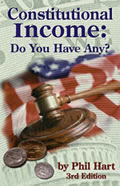Other
Usher
Articles:
Divorce And Child Support Are Eviscerating Military Recruitment
WHY VAWA HURTS FAMILIES
David
R. Usher
March 25, 2006
NewsWithViews.com
If family violence was simply a matter of violence against women, the Violence Against Women Act (VAWA) would not be the anti-family tragedy that it is.
VAWA is the most widely-abused of all divorce weapons. It is causing widespread corollary damage to families. A mere statement of fear faxed to the local courthouse is the only thing necessary to take over an entire family and its assets. This is exactly why radical feminists at the National Organization for Women love VAWA.
VAWA is predicated on the notion that domestic violence is a sex-related problem. Yet, no major study proves that men cause domestic violence more than women do.
VAWA drives the majority of serious family violence
VAWA pretends that men are dangerous in the intact family and should be immediately removed for nothing more than a statement of �fear� or �emotional distress.� If most serious family violence actually occurred in intact families, this would be useful policy.
Here is the truth about domestic violence in married families: Only 4% of serious domestic violence occurs in the intact family.[1] The other 96% occurs after the date of separation.
Why would we see nearly all serious domestic violence occur after the date of separation? Liberals often pretend that divorce is a minor surgical procedure. It is not. Abortion of marriage is often a very serious and messy procedure. When one is faced with complete loss of life savings and children in the combative and expensive divorce system, serious spousal conflict can be easily predicted.
If we would not stop forest fires by dumping gasoline on them, we must not pretend we can reduce domestic violence by destroying families as a matter of presumed public policy.
Marriage is the key predicator of low domestic violence rates. Domestic violence rates are higher in cohabiting relationships and non-intact families than in married families.
VAWA prevents spousal reconciliation
When non-serious marital disagreements exist, it is best in most situations to find out what is causing spousal disagreement and healing it, instead of destroying the family on the basis of an unverifiable claim of �emotional distress.�[2]
Women�s centers prohibit counseling, treatment, and spousal reconciliation. VAWA policies encourage law enforcement to treat all calls as criminal cases �- escalating common minor family disagreements into divorce and jail time. The purpose of police is to �keep the peace,� not to serve as henchmen for radical feminism.
Even when violence never took place, VAWA policies encourage women�s centers and others to take women directly to divorce courts for immediate issuance of restraining orders and divorce petitions, without even looking to see who or what is causing family conflict, how serious the conflict actually is, or whether it existed in the first place. No other options are funded under VAWA, expressly limiting what agencies involved can do.
Abuse of Restraining Orders
Restraining orders are widely abused instruments of law. They are usually issued by filing alone, and made permanent because �the mere allegation of domestic abuse � may shift the burden of proof to the defendant.�[3]
In one state, at least one-third of divorces[4] involve a restraining order to gain tactical control of the family in a divorce proceeding.
Restraining orders are �part of the gamesmanship of divorce� according to Illinois attorney Thomas Kasper.[5] Washington state attorney Lisa Scott describes the system accurately; �protection orders have become �weapons of mass destruction� in family courts. Whenever a woman claims to be a victim, she is automatically believed. No proof of abuse is required.�[6]
Feminist advocates and attorneys are well aware of the anti-family intent of VAWA policy. In the trade, restraining orders are referred to as �divorce planning, �slam-dunks,� and �silver bullets� -- �Unfortunately, requests for ex-parte relief are based upon many circumstances, some of which are made only for the purpose of obtaining an advantage in litigation.�[7]
It is estimated that more than one million restraining orders are issued annually in the United States. Studies at the state level indicate that less than half of these orders even include an allegation of violence. The rest are issued merely on an unverifiable and uncontestable assertion of �fear� or �emotional distress.�[8]
Where half of all restraining orders do not include even an allegation of violence, we can safely conclude that at least 500,000 restraining orders are sought for tactical reasons in divorce. The actual number is far higher, because no injury or other evidence that an altercation took place is required in order to get a restraining order.
The root cause of most spousal conflict: Drinking, Drugs, and Family
In 1998, the Department of Justice reported that 75% of serious spousal violence involves one or more partners who has been drinking. Another 11% involve drugs. In total, 86% of serious domestic violence involves abuse of mood-altering substances.[9]
Chemical dependency is a preventable and treatable disorder. Recovery rates for chemical dependency are about 70% - 75% at quality treatment facilities. What better way could we possibly reduce family violence, divorce, human misery, and highway traffic fatalities than to address the problem at the source? History proves that destroying the family as preferred policy causes widespread downstream problems.
Clearly, until public policy provides at least one positive option for troubled families, we are doing great harm.
We must first deal with family conflict at the source before resorting to destroying families, except in clinical cases where a spouse represents an immediate threat.[10] Public policy must be changed to help spouses work through these problems, and in particular, expect marital responsibility.
We do not need to, and should not force this on families. Most spouses in troubled families desperately want and need programs to help get a troubled spouse or child into treatment for abuse of mood-altering chemicals. Families deserve the option of positive interventive assistance, instead of having to �live with it� or resort to divorce.
We must end the Violence Against Women Act, and in its place create sensible and useful marriage movement policies that truly expect marital responsibility and help spouses work through the common problems of marriage and aging.
|
Subscribe to the NewsWithViews Daily News Alerts! |
The Marriage Movement is the Answer
An abundance of evidence proves that women�s centers and radical advocacy groups cover up women�s violence, drive �divorce for the hell of it,� and break up many more families than they actually help. They recommend policies that line their own pockets with billions federal dollars, some of which are misused to lobby for anti-family feminist initiatives such as same-sex marriage, gay. For this reason, no politician who truly cares about the family and the future of marriage could possibly support the Violence Against Women Act.
Footnotes:
1,
Statistical Handbook on the American Family, Chadwick and Heaton,
1992, p 260, Table H2-5
2,
Kasper T. Obtaining
and defending against an order of protection. Illinois Bar Journal
June 2005.
3,
Altman MG. Litigating domestic abuse cases under ch. 209A. Massachusetts
Lawyers Weekly, Oct. 23, 1995, p. B6
4,
Corry CE, Fiebert MS. Pizzey E. Controlling
domestic violence against men. 2002.
5,
Kasper T. Obtaining
and defending against an order of protection. Illinois Bar Journal
June 2005.
6,
Scott L: Scream
queens fuel nightmarish VAWA system, July 5, 2005.
7,
Testimony to the Child and Family Law Committee for HB351, 2003. Quoted
in The Status of Men in New Hampshire: First
Biennial Report of the New Hampshire Commission on the Status of Men,
November 1, 2005, p. 15.
8,
Office of the Commissioner of Probation, Massachusetts Trial Court:
The tragedies of domestic violence: A qualitative analysis of civil
restraining orders. October 12, 1995
9,
Alcohol and Crime , U.S. Department of Justice, Office of Justice
Programs, 1998
10,
Current Controversies on Family Violence, Dr. Murray A. Straus, edited
by Richard J. Gelles and Donileen R. Loseke, 1993
� 2006 David Usher - All
Rights Reserved
David R. Usher is Legislative Analyst for the American Coalition for Fathers and Children, Missouri Coalition And is a co-founder and past Secretary of the American Coalition for Fathers and Children
E-Mail: drusher@swbell.net
We must end the Violence Against Women Act, and in its place create sensible and useful marriage movement policies that truly expect marital responsibility and help spouses work through the common problems of marriage and aging.









